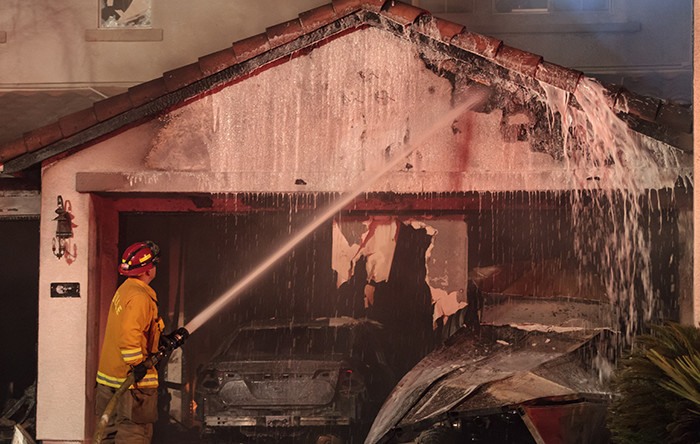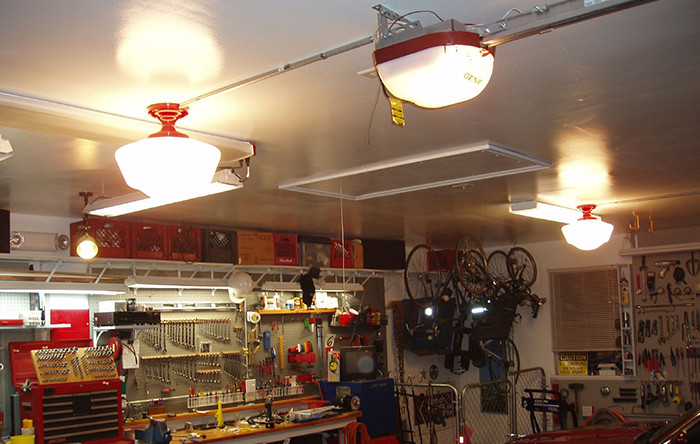You may be well educated on home safety, and securing your house from intruders and unsafe accidents. But have you thought about garage safety? Some homeowners overlook their garage, not realizing what an important aspect of home safety garage safety is.
From stored poisons and poisonous gas to inadequate lighting and unsafe garage doors, garages can be a dangerous place. But there are ways to make your garage a much safer space, by following these garage safety tips.
Read on to find out how to improve the safety of your home’s garage.
- Exercise fire safety
Garage fires can result in millions of dollars in property losses, not to mention the potential for injury or death. They usually spread quickly, and aren’t detected as quickly as house fires.
Protect yourself from the threat of garage fires by:
- Storing flammable liquids in a safe place (a shed or somewhere else not connected to your house).
- De-cluttering, and cleaning up anything that would act as kindling in a garage fire.
- Not using flammable floor coverings, including rugs, tarps, or cardboard.
- Installing a heat alarm (traditional smoke alarms don’t work in garages because they respond to humidity and fumes).

- Avoid carbon monoxide poisoning
Carbon monoxide is an odorless, invisible gas that can quickly cause injury or be fatal. The gas can build up quickly in a closed garage, putting you at risk. It can also seep into your house where your family could breathe it in.
How should you avoid carbon monoxide poisoning?
- Don’t warm up or leave your car running in the garage, even with the garage door open.
- Don’t operate generators, pressure washers, or other equipment with combustible engines inside the garage (or house).
- Make sure your house is equipped with carbon monoxide detectors, in case any gas seeps in from the garage.
- Learn the symptoms of carbon monoxide poisoning, and get everybody outside and call 911 if you suspect a leak.

Find out more about carbon monoxide, and learn other garage and home safety ideas with lifesaving winter safety tips.
- Secure your garage door opener
Do you have an automatic garage door opener? Garage door openers are found in most garages today, but they can provide an intruder with a way into your garage, then possibly your home.
By using a coat hanger or similar device, an intruder can trip the safety release cord on your garage door opener, from the outside. Then, the intruder will be able to lift the garage door and enter.
Garage doors must have a safety release cord controlled by a grab handle. So what do you do to protect your garage? One method involves using a zip tie to lock the disengaging arm on the opener. Doing so means a coat hanger wouldn’t be an adequate tool to gain entry to your garage.
But what if you need to use the safety release cord in a real emergency? Don’t worry, pulling on the cord hard enough will snap the zip tie and release the door.
- Make sure your garage door has a safety reverse feature
Garage doors manufactured in the United States since 1993 must include a safety-reverse feature. This feature includes an invisible beam, which, when broken, causes the garage door to reverse automatically.
This is a great safety tool, as it can prevent the door from shutting on top of someone, or otherwise causing injury.
If your garage door opener doesn’t have the safety reverse feature, it’s time for a new garage door opener. If yours does have the feature, conduct a garage door safety test to make sure it is working properly.
To test your garage door safety reverse feature:
- Check the sides of the garage door for black sensors mounted no more than six inches off the floor.
- Block the sensor with an object six inches high or taller, and press the garage door close button. The door shouldn’t be able to close.
- Place an object 1.5 inches tall on the ground in the door’s path, and press the close button. The door should reverse off the object.
- Adequately light your garage
Homeowners often overlook garage lighting as an important feature. Why should your garage be well lit? With all the chemicals, tools, paints, sports equipment, and other items stored in the garage, garages become a tricky place to navigate. By having adequate lighting, you could prevent a family member from tripping and falling, knocking over a tool or chemical, or running into an object.

When you install lighting, make sure it is bright enough, and covers all areas of the garage interior. Also make sure light switches are easy to get to, and located near the entrance to your house, and near the garage doors.
Garages are a great place to use motion-activated lights—both inside and outside your garage. Learn more about sensor lights by reading about the five most effective motion sensor lights for under $50.
Once your garage is a safer place, turn a critical eye on your home. Read these eight safety must haves for every home.
Photo Credit to: Dave Nakayama, Matthew Fern, mtneer_man, Dec. 1, 2015 via Flickr, Creative Commons Attribution.


